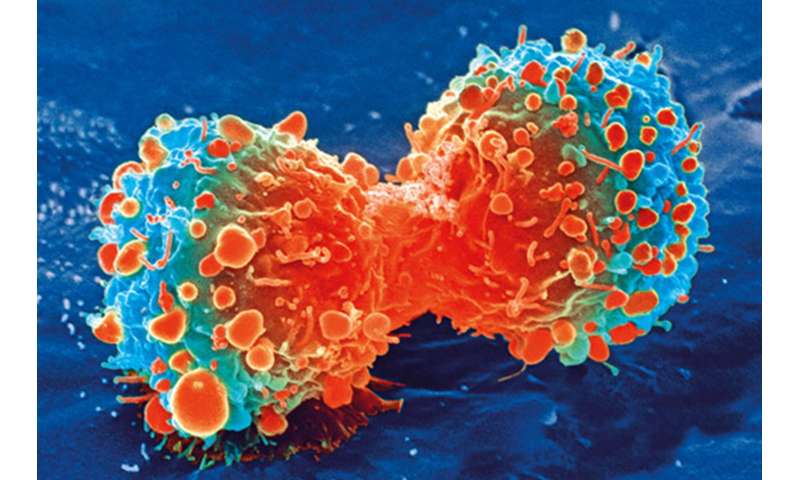
Peter Mac scientists have found a way to target acute myeloid leukemia (AML) at its source—a discovery that could yield a more effective treatment for this aggressive and often incurable blood cancer.
Prof Mark Dawson and Dr. Laura MacPherson led the international research team, in collaboration with researchers in Europe and Australia including at the Walter and Eliza Hall Institute of Medical Research (WEHI), Monash Institute for Pharmaceutical Sciences (MIPS) and Cancer Therapeutics CRC.
They identified a new druggable target in AML stem cells, which are the ‘roots’ that sustain this type of cancer. Although these stem cells are rare, they are likely to be the main cause for resistance to current anti-cancer therapies.
“Our current treatments for AML are good at eliminating the majority of cancer cells but they can leave these rare leukemic stem cells behind, resulting in the cancer coming back after treatment,” says Prof Dawson, who is a clinician-scientist and senior author on the study.
“There is a critical need for new AML treatments that eradicate these stem cells, and with this discovery we’ve taken a major step towards such a treatment.”
In a paper published early today in the journal Nature, the scientists describe how the protein HBO1 is essential for the survival of leukemic stem cells. When HBO1 is lost, these cells are no longer able to drive cancer growth in laboratory models of human and mouse AML.
“We found that HBO1 loss caused these difficult-to-treat leukemic stem cells to cease dividing, transition to less malignant forms and, in some cases, undergo cell death,” explains study lead author, Dr. MacPherson.
The scientists then undertook a series of experiments to discover the part of the HBO1 protein that was critical for its function in stem cells. In collaboration with medicinal chemists in Melbourne, the team developed a small molecule—the first building block of a drug—that could suppress the activity of HBO1 in AML cells.
“When we treated a range of human and mouse AML cells with a drug that inhibits HBO1 in the laboratory, we discovered that this compound potently induced anti-cancer effects,” says Dr. MacPherson.
The paper describing this work is titled “HBO1 is required for the maintenance of leukemia stem cells”. “This is a very exciting discovery as targeting leukemic stem cells holds the key to curing AML,” says Prof Dawson, whose clinical practice is primarily focused on improving outcomes for patients with AML.
Source: Read Full Article



